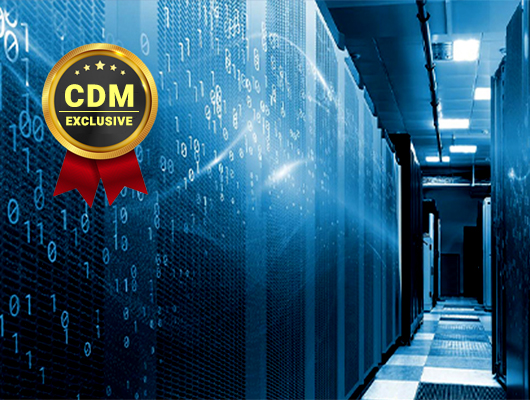By Steve Durbin, Managing Director, Information Security Forum
Cloud computing has become a prevalent force, bringing economies of scale and breakthrough technological advances to modern organizations, but it is more than just a trend. Cloud computing has evolved at an incredible speed and, in many organizations, is now entwined with the complex technological landscape that supports critical daily operations.
This ever-expanding cloud environment gives rise to new types of risk. Business and security leaders already face many challenges in protecting their existing IT environment. They must now also find ways to securely use multiple cloud services, supported applications and underlying technical infrastructure.
The Need to Use Cloud Services Securely
The surge in business processes supported by cloud services has been well evidenced by organizations using cloud services to store confidential data in the cloud environment. But when using cloud services, organizations are still unsure whether to entrust cloud service providers (CSPs) with their data. CSPs generally provide a certain level of security as substantiated by multiple surveys, but cloud-related security incidents do occur.
CSPs cannot be solely responsible for the security of their customers’ critical information assets. Cloud security relies equally on the customer’s ability to implement the right level of information security controls. Nevertheless, the cloud environment is complex and diverse, which hinders a consistent approach to deploying and maintaining core security controls. It is vital that organizations are aware of and fulfill their share of the responsibility for securing cloud services to successfully address the cyber threats that increasingly target the cloud environment.
The Rise of the Multi-Cloud Environment
As organizations acquire new cloud services, they typically choose these from a selection of multiple CSPs and therefore need to deal with a multi-cloud environment, which is characterized using two or more CSPs.
Organizations favor a multi-cloud environment because it allows them to pick and choose their preferred cloud services across different CSPs (e.g. AWS, Microsoft Azure, Google Cloud, Salesforce). However, each individual CSP adopts its own jargon, its own specific technologies, and approaches to security management. The cloud customer, therefore, needs to acquire a wide range of skills and knowledge to use different cloud services from multiple CSPs securely.
Organizations require a range of different users to securely access cloud services from within the organization’s network perimeter through secure network connections (e.g. via a gateway). However, organizations also need their cloud services to be accessed from outside the internal perimeter by business partners and users traveling off-site or working remotely, all connecting through a selection of secure network connections as dictated by the organization.
Overcoming Cloud Security Challenges
While CSPs provide a certain level of security for their cloud services, organizations need to be aware of their security obligations and deploy the necessary security controls. This requires organizations to understand and address the many security challenges presented by the complex and heterogeneous aspects of the cloud environment.
Our ISF members have identified several obstacles to operating securely in the cloud environment. The main challenges include:
- Identifying and maintaining the appropriate security controls
- Balancing the shared responsibility for security between the CSP and the cloud customer
- Meeting regulatory requirements to protect sensitive data in the cloud environment
The rapid explosion of cloud usage has accentuated these challenges and, in some instances, left organizations insufficiently prepared to tackle the security concerns associated with using cloud services.
Balancing the Shared Responsibility for Security Between the CSP and the Cloud Customer
Securing the use of cloud services is a shared responsibility between the CSP and the cloud customer. The security obligations incumbent on the CSP are to protect the multi-tenant cloud environment, including the backend services and physical infrastructure, as well as to prevent the commingling of data between different customers.
While the CSP maintains much of the underlying cloud infrastructure, the cloud customer is responsible for securing its data and user management. Whether the customer’s responsibility extends to performing security configurations for applications, operating systems and networking will depend on the cloud service model selected.
This shared responsibility for security can create confusion and lead to over-reliance on the CSP to mitigate threats and prevent security incidents. It is essential that the cloud customer does not depend wholly on the CSP to deploy the appropriate security measures but clearly understands how responsibility for security is shared with each CSP in order to identify and deploy the requisite security controls to protect the cloud environment.
Meeting Regulatory Requirements to Protect Sensitive Data in the Cloud Environment
An organization using an on-premises IT data center will know exactly where its critical and sensitive data resides and can exert full control over the movement of its data. This helps considerably when implementing security controls, whereas, in the cloud environment, data moves in and out of an organization’s perimeter more freely. This can obscure where critical and sensitive data is located, and how it can be protected, which can hinder an organization’s ability to effectively enforce the requisite security controls across all of its cloud services in line with compliance requirements.
While it is the cloud customer’s responsibility to ensure the security of its data in the cloud environment, the customer’s control over its data is intrinsically limited since the data is stored by an external party – the CSP – in an off-site location, often in a different country. Moreover, the CSPs will often leverage several data centers in geographically distinct locations to ensure the organization’s data is stored on more than one server for reasons of resilience. This creates additional complexity in terms of managing data across borders, understanding where it is located at a given moment in time, determining the applicable legal jurisdiction and ensuring compliance with relevant laws and regulations – an obligation that rests fully with the cloud customer, not the CSP.
Maximize Potential and Take Responsibility
Modern organizations must operate at a fast pace, delivering new products and services to stay ahead of the competition. Many are therefore choosing to move ever further towards cloud computing, as the elasticity and scalability offered by cloud services provide the desired flexibility needed to compete. For an organization to have confidence that it can move to the cloud whilst ensuring that vital technological infrastructure is secure, a robust strategy is required.
The cloud environment has become an attractive target for cyber attackers, highlighting the pressing need for organizations to enhance their existing security practices. Yet consistently implementing the fundamentals of cloud security can be a complicated task due to the diverse and expanding nature of the cloud environment.
This is but one of many challenges that organizations need to overcome to use cloud services securely. Organizations cannot rely purely on CSPs to secure their critical information assets but must accept their own share of responsibility. This responsibility calls for a combination of good governance, deployment of core controls and adoption of effective security products and services. Controls that cover network security, access management, data protection, secure configuration, and security monitoring are not new to information security practitioners, but they are critical to using cloud services securely.
Moving forward, organizations can select from a variety of trends and technologies that will enable them to use cloud services securely – from the adoption of new products to the embedding of improved processes, such as a focus on secure containers, where security is given greater emphasis during development.
Assuring that services are used securely will provide business leaders with the confidence they need to fully embrace the cloud, maximizing its potential and driving the organization forward into the future.
About the Author
 Steve Durbin is Managing Director of the Information Security Forum (ISF). His main areas of focus include strategy, information technology, cybersecurity, digitalization and the emerging security threat landscape across both the corporate and personal environments. Previously, he was a senior vice president at Gartner.
Steve Durbin is Managing Director of the Information Security Forum (ISF). His main areas of focus include strategy, information technology, cybersecurity, digitalization and the emerging security threat landscape across both the corporate and personal environments. Previously, he was a senior vice president at Gartner.
Steve can be reached online at (@stevedurbin) and at our company website www.securityforum.org


